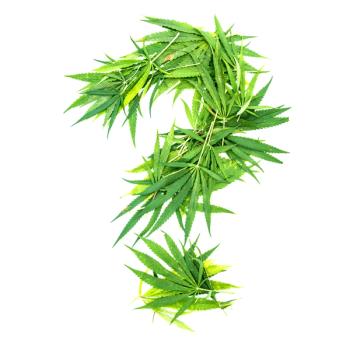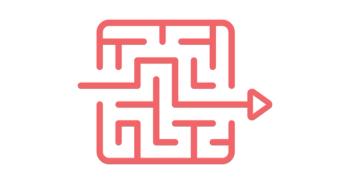
Cannabis Science and Technology
- April 2022
- Volume 5
- Issue 3
- Pages: 28-30
How Poor Environmental Control Creates Pest Pressure
How can we address the pest problems created in commercial cannabis cultivation facilities when environmental control systems are improperly designed or implemented?
This article series explores some of the more technical aspects of cannabis cultivation that growers should understand to run their businesses more efficiently and more profitably. In this final article, we utilize concepts introduced throughout the series to address the pest problems created in commercial cannabis cultivation facilities when environmental control systems are improperly designed or implemented.
Too much moisture in the air, on plant leaves and buds, or around the roots is the most common culprit for the development of pathogenic infection of cannabis plants. Concurrent fluctuations in temperature can be detrimental to plant vitality as infectious organisms infiltrate deeper into plant tissues during those windows of time when optimal conditions are lost. Ascomycetes (powdery mildew), fusarium (crown rot), botrytis (bud rot), pythium (root rot), and many more pathogens do not need optimal conditions to infect. They can lie dormant inside the plant (endophytic) or on its surface (ectophytic), slowly growing their way into or across the plant until the perfect moment when conditions fall outside of a safe range for the plant.
Temperature, Relative Humidity, and Pathogens
When environmental control is lost, even if only for short periods of time, diseases can quickly grow deeper into the plant’s tissues. Cannabis has an optimum temperature range for highly productive growth and so do pathogens. The peak of productivity for both pathogens of cannabis and the plant itself overlap quite a bit. Typically, if the preferred temperature range for the plant is maintained, the pathogen is unable to grow at a rate that can keep up with the plant’s development and so its influence is never seen, even though the infection persists. However, if for a short period of time the temperature shifts out of the optimum range for the plant, but still lies in the optimum range for the pathogen, there will be a rapid growth response by the pathogen and symptoms may become visible as plant growth slows. This effect is often seen with fungal diseases such as fusarium or botrytis as one day the plant looks healthy and vigorous and the next it is chlorotic with water-soaked and mushy tissue.
Damage from temperature swings is not limited to direct impacts on plant tissues and stress can occur even if humidity is in a sufficient range. Only certain organisms such as powdery mildew and botrytis are directly dependent on the room air conditions, as opposed to water-borne diseases like pythium or fusarium which would thrive in high humidity indirectly as water movement in the rootzone is suppressed by a high-humidity induced low vapor-pressure deficit (VPD).
Excessive moisture in the air (high humidity), even if only for moments at a time, greatly encourages the growth of diseases such as powdery mildew and bud rot. It is not enough to simply monitor your room humidity sensors that control your conditioning equipment, you must identify the microclimates within your cultivation facility. If the sensor for humidity is only a panel mounted on the wall, there could be a plethora of environmental conditions happening in the room. Perhaps your humidity sensor reads right at your setpoint most of the day, but if this is showing an average over a longer period of time it may not be informing you of the fluctuations in room air conditions. It could be that your sensor shows an average over a 10-minute period and during that time the humidity swings are ±10%, which could enter the pathogen favoring zone quite frequently. It’s not just about knowing what value is the optimum, you must ensure that you are providing those conditions uniformly and consistently.
Using HVACD Systems to Mitigate Risk
The most sophisticated (and legal) pest management products will be unable to stop the proliferation of plant pathogens if the environmental conditions cannot be kept within an acceptable range. Exposure to the pathogen is extremely difficult to avoid and even harder to maintain for extended periods of operation, especially without fully clearing material from a grow room in between each production cycle.
Although air filtration and sterilization systems can greatly reduce the threat of pathogen propagation by eliminating airborne spores or organisms, the vitality of plants must be protected and favorable conditions for those pathogens must be eliminated by ensuring excess moisture is kept at bay and that excessive temperature swings are avoided.
Heating, ventilation, air conditioning, and dehumidification (HVACD) systems have advanced quickly as the needs of the commercial cannabis industry have evolved to support a much larger market. Legacy producers have primarily maintained environmental conditions using multiple pieces of equipment (that is, oscillating fans, standalone dehumidifiers, air conditioners, and heaters) to address individual environmental conditions. The upside to this approach is the ease of accessing retail equipment that can be added in a series to meet the changing needs of production and to provide redundancy in the case of equipment failure. The downside to this method is the variability of environmental conditions within a grow room is greatly increased as the plants are essentially located in an air mixing chamber. Pockets of high humidity form where the air is not mixed as frequently. This is most likely to happen in corners or near a source of moisture such as the grow tray, substrate, or leaves where water is evaporating continuously.
Very quickly, white fuzz can form in high humidity conditions as ascomycetes colonize juicy leaves. Think of a newly sprouted seed—if it emerges and then conditions become dry, it is likely to die. If humid conditions remain, the roots have more time to establish a water column in the vascular tissue as the leaves acclimate to the air conditions. If it stays too wet, the root will likely rot as it is suffocated by oxygen-deficient water, leaving an opening for a pathogen to attack. You may have noticed some seedlings turn to white or gray mush when left in a tray that is too wet.
Some producers will keep humidity levels very low to avoid any chance of pathogens growing, but leaves need a certain amount of moisture in the air as well to remain healthy and this will change depending on the air temperature, light source, and maturity of the plant. If conditions are too dry while the lights are on, photosynthesis can be inhibited for several reasons. If they are too dry while the lights are off, xylem-based nutrient movement into the newly developing tissues can be inhibited, specifically calcium movement into the new growth is inhibited. Cell wall development requires a constant supply of calcium to form rigid structures that effectively prevent intrusion by pathogens. Calcium primarily enters plants through meristematic tissues (the foremost tip of a root or shoot) as the cell wall is still forming at this location exposing the vascular tissue where calcium can enter the plant and be transported into developing tissues through the unidirectional water stream called the xylem. If VPD is very high, calcium is likely to be shuttled into the tissues where transpiration is the highest, which is likely to be the large mature leaves with the most developed stomata. This shuttling of calcium away from newly developing tissues encourages poor cell wall development, leaving plants weak and susceptible to attack.
Final Thoughts
Ultimately, plant vitality will be strongest when plants are able to thrive without constantly adapting to shifting conditions. In nature, a plant must deal with an array of stressful circumstances, and it is loaded with mechanisms to ward off threats and protect itself from a shifting environment. However, these adaptations cost metabolic energy and will reduce plant productivity, yield, and end-product quality.
Many of these points are often overlooked as producers seek out short-term solutions to chronic issues caused by poor HVACD design and, subsequently, environmental control. Rather than pursue topical products to suppress pest issues, investigate what aspects of your environmental control systems might be providing an optimum habitat for pests to thrive rather than plants. Identify the microclimates and make attempts to de-stratify these pockets and you will see great improvements in the overall health of your facility.
Further Reading
- R. Batts and S. Burgner, Cannabis Science and Technology 4(2), 32-34, 38 (2021).
https://www.cannabissciencetech.com/view/why-does-leaf-temperature-matter-in-a-commercial-grow-room . - R. Batts and S. Burgner, Cannabis Science and Technology 4(4), 29-32 (2021).
https://www.cannabissciencetech.com/view/a-deep-dive-into-vapor-pressure-deficit-for-commercial-cannabis-cultivation . - R. Batts and S. Burgner, Cannabis Science and Technology 4(7), 38-42 (2021).
https://www.cannabissciencetech.com/view/does-light-spectrum-alter-plant-transpiration-rates . - S. Burgner, Cannabis Science and Technology 4(9), 40-44 (2021).
https://www.cannabissciencetech.com/view/providing-sufficient-airflow-for-plant-growth-environments . - S. Burgner, Cannabis Science and Technology 5(1), 52-54 (2022).
https://www.cannabissciencetech.com/view/how-does-carbon-dioxide-enrichment-affect-environmental-control .
About the Author
Sam Burgner is a technical writer for
How to Cite this Article:
S. Burgner, Cannabis Science and Technology 5(3), 28-30 (2022).
Articles in this issue
over 3 years ago
Beer’s Law, Part II: Physical Basis and Derivationover 3 years ago
What’s in a Vape, Part Iover 3 years ago
Cannabis Science Conference Honors the Wisdom of WomenNewsletter
Unlock the latest breakthroughs in cannabis science—subscribe now to get expert insights, research, and industry updates delivered to your inbox.





